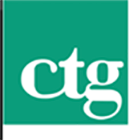Recruiter Top 10: Recruiting and Hiring Trends to Pay Attention to in 2017

Welcome toTop 10, Recruiter.com’s weekly rundown of the best of the best in recruiting! Every Friday, we release a list of some of our favorite people, things, and ideas dominating the industry. From awesome tech tools and cool companies to great books and powerful trends, no stone in the recruiting space will be left unturned.
This Week: Top 10 Recruiting and Hiring Trends in 2017
New year, new you – and a new HR and recruiting landscape in the job market to navigate, too. Change has always been inevitable – but it happens a lot more quickly and a lot more often in our tech-driven world. As with years past, there is every reason to expect the HR and recruiting industries to undergo some changes. So, we asked ten experts about the trends they think people should be paying attention to in 2017. See what they had to say below:

In a recent RiseSmart study, we found that recruiters are now focusing more on the candidate experience as a way to protect their brands and to save time and money associated with recruiting. Here are some new trends in recruiting which will make the hiring process more effective and efficient for companies and job seekers:
– 60 percent of recruiters report conducting only 1-3 interview sessions (a candidate with five interviews in one day = one session) before an offer.
– 49 percent of recruiters report time-to-hire to be within four weeks.Companies are taking longer than ever to make hiring decisions and, as a result, losing out on hiring the best candidates. In addition, lengthy hiring processes and lack of communication with job candidates are endangering employer brands as candidates are using the hiring process as a window into the organization.
Today, the employee experience is critical to the success of any company hoping to hire and retain the best talent. That experience begins with the hiring process and continues through onboarding and beyond. As such, companies can no longer afford to put job candidates through a protracted process that creates negative attitudes toward the company.
— Sanjay Santhe, CEO, RiseSmart

In 2016, we saw the beginning of companies moving away from their ratings-based annual performance review processes, with Adobe, GE, Accenture, Deloitte, and many others announcing an end to their traditional once-a-year reviews. Companies of all sizes have realized that the annual performance review not only provides an inaccurate snapshot of employee performance, but can also harm employee motivation and engagement. 2017 will be the year most companies will follow suit and remove the annual performance review, replacing it with more frequent check-ins and real-time feedback. These companies will be able to move the resources used to train managers on how to administer performance reviews to much more useful management training such as how to give good and helpful feedback.
Companies that are slower to change will retain their performance review processes but will pilot continuous feedback programs and more frequent check-in programs which they will role out in late 2017 and early 2018. These companies will focus on analyzing the current time and other resources wasted on performance review processes that are ineffective. Through surveys and focus groups, they will document why these programs are not working. We will continue to see the need to retain not only top performers, but also good performers who make up the majority of your workforce. Modern performance management programs will be key to retaining these employees and inspiring maximum productivity.
– Rajeev Behera, CEO, Reflektive

Gone are the days of blasting out hundreds of messages for one job, hoping that one of the people who read your message (the majority of whom had no business receiving it in the first place) will either respond for themselves or refer the position to someone who might be interested. Rather, in 2017, we will see more refined search and matching capabilities that will not only enhance the candidate experience, but also simplify the process and timelines for recruiters, therefore reducing costs and enhancing outcomes for employers.
— Seth Matheson, Director, Talent Fusion by Monster

Resumes and cover letters are the bread-and-butter of recruiting, but in an economy dominated by businesses that are focused on innovation and problem-solving, they are strikingly unable to show much more than past experience. Recruiting in 2017 and beyond will rely less on resumes and cover letters – many of which are padded anyway – and increasingly on insights available before a candidate has even applied and alternative forms of demonstrated skill and potential either before or during the interview process.
For example, short one-page proposals that clearly and succinctly identify a real business problem, outline a solution, and include possible risks, costs, and likely outcomes would demonstrate critical thinking and an understanding of business dynamics in a way that resumes and cover letters never could.
— Joanna Riley, Cofounder and President, 1-Page

Shorts like these on Ultimate Software should continue to trend as the market becomes more saturated with well-funded HR startups (Gusto, Zenefits, Lever, Greenhouse, SmartRecruiters, etc.). In an annual survey conducted by ONGIG from 2015 to 2016, the applicant tracking system world saw a decrease in market share for Oracle’s Taleo (-14.27 percent) and IBM’s Brassring-Kenexa (-4.54 percent). The public will see this play out in the stock market for many companies, but the real question is this: Which emerging startups are going to fail to hit the traction they need to become a “unicorn” (startups valued at $1 billion or more) and actually pay their investors back?
— Andrew Buhrmann, President, Vettd

Particularly here in Massachusetts, I feel the employment market is shifting from a buyer’s market to a seller’s market in a lot of disciplines. Most companies have been using recruiting methods and tools that are intended to screen out qualified people from masses of applicants. Now, I see our clients getting multiple offers and being in the market for shorter periods of time before getting offers, all of which indicates a seller’s market is forming.
Companies that really want top talent will have to switch sourcing strategies and tools to ones that attract people rather than screen them out. Top talent probably won’t be bothered dealing with screening tools like long, detailed online applications, prerecorded video interviews, etc., before they have a chance to talk with a manager to determine what is attractive about a particular role or why there is a compelling reason to be part of a particular company.
— Dave Denaro, Vice President, Keystone Partners

We will see increased use of freelance workers, crowdsourcing, and an overall shift toward the temporary, mobile workforce in 2017.This “human cloud” model allows companies to tap into just-in-time talent and provides more employment opportunities outside of traditional full-time employment for job seekers. This shift will create new challenges for finding, managing, and retaining this temporary workforce while also ensuring that companies continue to produce a high-quality, on-time work product.
— Jim Nichiporuk, Vice President, and Rob Keranen, Managing Director, CTG Strategic Staffing

The biggest recruiting trend in 2017 will be A.I. for recruiting: software designed to automate or streamline some part of the recruiting workflow.
Interest in A.I. for recruiting is on the rise because while 56 percent of talent acquisition leaders say their hiring volume will increase next year, 66 percent of recruiting teams will stay the same size or even shrink.
Given these competing demands, hiring success in 2017 will depend on a recruiter’s ability to intelligently automate their workflow. Automating the recruiting workflow through A.I. will free up recruiters’ time. Ironically, automation will enable recruiters to become more human by allowing them to dive deep into candidates’ needs and desires to create more meaningful connections.
— Ji-A Min, Head Data Scientist, Ideal.com

Companies are going to get creative with how they help employees manage financial stress and stress in general in 2017.
Take-home pay is on a steady decline, and younger employees are saddled with school debt. As much as HR would love to be able to pay generous salaries that would ease that pain, it’s not going to happen.
This will have to be addressed from a few angles. On one hand, companies will look to benefits that can help stretch paychecks, from complimentary financial planning access to flexible spending accounts (FSAs) and employee discount programs.
On the other hand, we’ll see more stress management and mindfulness benefits enter the workplace. A recent survey showed that 75 percent of employers see stress as a top concern, so look for more flexible scheduling, employee assistance programs (EAPs), and even meditation sessions at work. I expect to see many companies implement work/life balance policies to encourage employees to truly go offline when they’re out of the office.
— Brandon Carter, Employee Engagement and Loyalty Writer and Analyst, Access Perks

The new year will accentuate a growing divide in HR between organizations that focus HR more on the technical components and, on the other end of the spectrum, those organizations that focus on the support and development of people. (HR has to address both in any organization, but every HR department leans one way or another.) Organizations will be looking to their values to determine their responses to the potential loosening of labor laws and hiring requirements.
For organizations that lean toward the people part of HR, there will be a renewed commitment to diversity and inclusion with a recognition that this is more than demographics. This will lead to more and deeper conversations about how to work together in a deeply inclusive manner. This diversity will progress beyond legally mandated tolerance to a functional understanding of the synergy and success of inclusion.
For organizations that lean toward the technical components of HR, the focus will be on the bottom line, leading to a pulling-up-the-moat approach to business. These businesses will build a monoculture with corresponding short-term ease of decision making and surface harmony. These HR departments will do what they need to do to be in compliance and attract enough bodies to do the work.
The market will determine which approach is more successful in the long-term.
— Rita Sever, Author, Supervision Matters: 100 Bite-Sized Ideas to Transform Your Team

